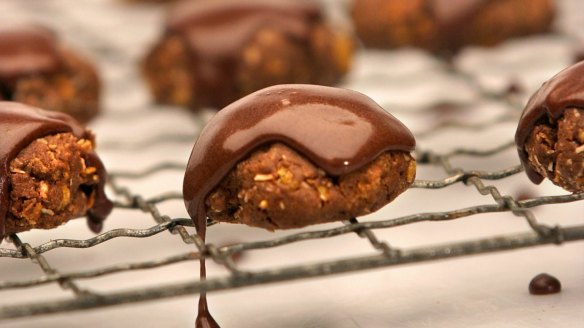The best way to clean cooling racks (and why they're not just for baking)

Baking and cooling racks are priceless kitchen tools. They're great for frying, whether during the dredging process or as a reusable alternative to paper towels for draining foods once they come out of the hot oil.
I use them regularly in baking, be it to help cool a batch of cookies or when glazing doughnuts to allow any excess to drip off.
Most recently, I used a rack to allow for air circulation when making crispy baked chicken wings.
They are in regular rotation in my kitchen, but no matter how hard I scrub, they never seem to get quite as clean as I want them thanks to their tight grid and all of the joints where food particles can get stuck.
So I went on a mission to find the best way to clean baking and cooling racks.
My first attempt was to toss them in the dishwasher. However, as I opened the door, expecting to find shiny metal that looked like new, I was greeted with rust on the cookware I put through a cycle. I learned the hard way that not all baking and cooling racks are dishwasher safe. Don't repeat my mistake: Check with the manufacturer first. (However, even stainless steel racks designated as dishwasher safe can rust, so you might be better off with hand-washing regardless.)
After consulting my colleagues and conducting some Internet research, I realised that the method I usually employed was best:
- Fill a rimmed baking tray with warm soapy water.
- Insert the inverted rack and let it soak.
- Scrub with a sponge or brush, rinse, and dry.

With that in mind, here are a few extra tips I picked up along the way to make the task as easy as possible.
For particularly grimy or burned-on messes, try using Bar Keepers Friend or baking soda in lieu of dishwashing liquid to restore racks to their former glory. And as my colleague Becky Krystal states "Let them soak just long enough to make the job easier and not any more – we're generally talking under an hour." This primarily keeps you from procrastinating, but it also saves you from potentially damaging your sink or cookware.
When it comes time to scrub, I used to just use the scrubber side of a sponge, which did a decent job. However, I found that the fibres sometimes got stuck in the corners of the grid (though rubbing in the direction of the wires on each side can help limit this).
My colleague Olga Massov introduced me to the tawashi brush, which already has made a huge difference in getting into the various nooks and crannies. (To the truly meticulous cleaners out there: she also recommends an old toothbrush for the hard-to-reach spots.)
The drying step is pretty self-explanatory, but the holes in the rack can make it difficult to quickly and thoroughly rinse off all of the soap or other cleaner. One technique I use is to rub my hand along the rack as the tap is running, which disperses the water over a wider surface area compared to the small stream, saving both a bit of time and water.
Washington Post
The best recipes from Australia's leading chefs straight to your inbox.
Sign up- More:
- How to